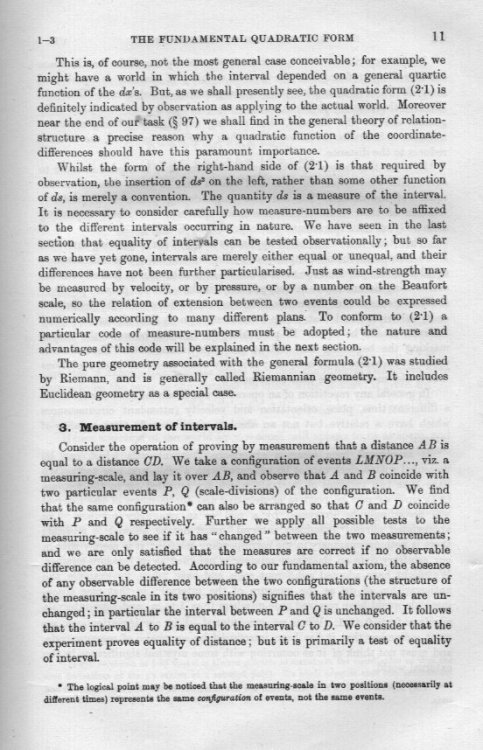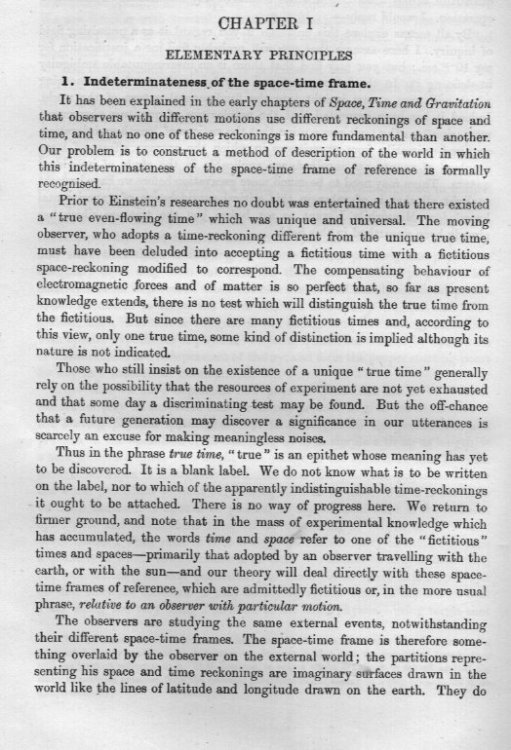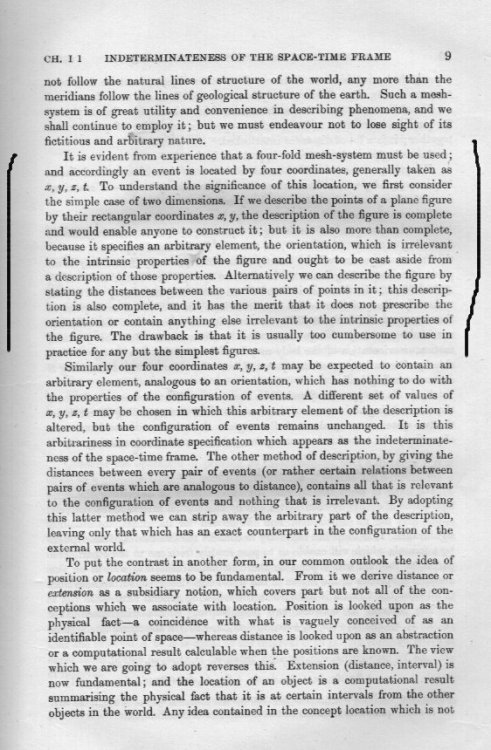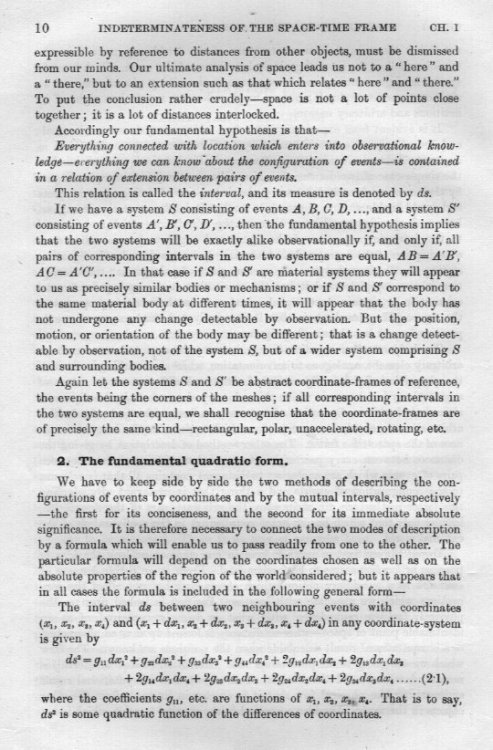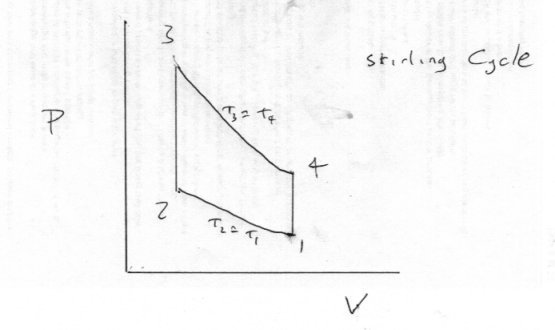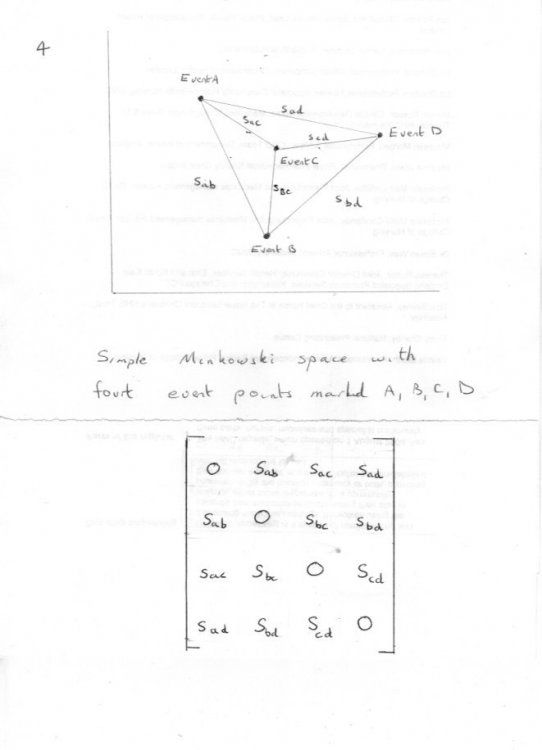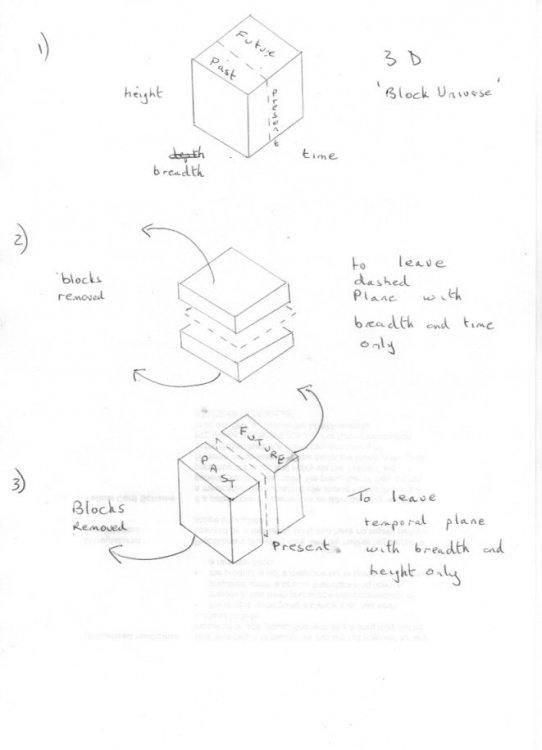-
Posts
18315 -
Joined
-
Last visited
-
Days Won
104
Content Type
Profiles
Forums
Events
Everything posted by studiot
-

Heat engine experiments and 2nd law of thermodynamics.
studiot replied to Tom Booth's topic in Speculations
You should be able to measure the temperatures of the hot and cold plates with and without insulation. That would be useful information, as well as the speed and timing of the running ( since you now have an idea of the timings, there is no need to babysit it like your earlier experiments) Also please let us deal with the simple machine first, before moving on to the more complicated one you have mentioned. -
By the way this should be in Physics, not homework help since your book gives working and you are asking for an explanation, not for us to do homework. I am not suprised you have received conflicting information. Most books are poorly written on this subject, as the example you quote shows. You are right to seek explanations. Firstly let us look at the often quoted formula [math]I = \frac{E}{{{R_{load}} + {r_{{\mathop{\rm int}} ernal}}}}[/math] Now if we assume that Rload is constant then for two I hope you can see that for two different currents, Both E and Rinternal cannot be the same for both currents. In fact as the cell becomes more and more exhausted the internal resistance rises and the EMF falls. So the currents of 400mA and 320 mA describe different situations. Most books will not tell you this. When I is 400mA the battery is fresh and the internal resistance is taken as zero (or negligable). So the full 12V EMF is applied to the load determining Rload to be 30 ohm. As the battery looses charge and the current falls Rinternal rises from zero and the EMF is shared between the load and the internal resistance. Since Rload is constant it is still 30 ohms but now passes 320mA so experiences a voltage drop of 9.6V. Your book must have assumed (again it did not say) that since the battery was still supplying substantial current its EMF has not yet dropped appreciably. This is often the case that the internal resistance change runs ahead of the EMF fall as that fall it set by the chemical reactions of the battery and it is only in the later stages of exhaustion when the current has dopped dramatically that other chemical reactions become important. However it should be noted that these days there are many more types of battery and the relationships between aging, E and Rinternal are more varied. Most books have not caught up with this either. Does this help ?
-

Heat engine experiments and 2nd law of thermodynamics.
studiot replied to Tom Booth's topic in Speculations
Thank you for the very useful animations I fully understand this machine now so progress can be made. +1 (I had to go look on a modern computer to view them, mine is Windows XP) I also see what you mean about a 'displacer', not a bad term although I would have chosen mixer or stirrer as that is what it does. To summarise; 1) The unit comprises an air chamber with a small offset piston, (small being the volume displaced as the piston moved is small compared to the total volume of the chamber) 2) If one end of the unit is heated ( or cooled) relative to ambient the heat flowing into the air in the chamber results in an increase (reducion) in pressure, which displaces the piston a small amount. 3) The piston drives an output shaft with a flywheel, via a conventional conrod and some gearing. 4) The output shaft drives a liftrod and crank which lifts and lowers the displacer within the chamber. 5) The mixed or stirred air away from the heat or cold source experiences a pressure reduction (increase), maintaining the cycle. -
The Morandi Viaduct which suffered a spectacular collapse in 2018 has been rebuilt and is about to reopen. https://www.bbc.co.uk/news/world-europe-53628580 There was an earlier thread about the collapse, but I can't find it ATM.
-
Mirrors?
-
Michel in particular might like to note the anther point hidden in all this. By imposing a coordinate system something has been added to the subject, not taken away. That difference became clear to modern geometers as the important difference between classical Euclidian Geometry and the Geometry of that Frenchman. Eddington points this out (he was not the first to realise this) towards the end of the second paragraph on page 9 of his book. That which is added is inherent in the coordinate system, not the subject. And the principle of relativity says that there are features of the subject that are independent of the coordinate system (including even no coordinate system ) (How often do we forget zero when substituting values into some universal statement : What is the direction of the zero vector ?)
-

Heat engine experiments and 2nd law of thermodynamics.
studiot replied to Tom Booth's topic in Speculations
So can we all analyse the system in my picture in relation to the laws of Thermodynamics ? Like other members I have already said that this machine in in perfect accord with these laws, including the second law. We have also asked why you think the second law is appropriate, when this is really a First Law matter. -

Heat engine experiments and 2nd law of thermodynamics.
studiot replied to Tom Booth's topic in Speculations
Is this the type of engine you are referring to ? American Stirling Company Displacer Type Stirling Engine Gas expands when heated, and contracts when cooled. Stirling engines move the gas from the hot side of the engine, where it expands, to the cold side, where it contracts. DISPLACER PISTON When there is a temperature difference between upper displacer space and lower displacer space, the engine pressure is changed by the movement of the displacer. The pressure increases when the displacer is located in the upper part of the cylinder (and most of the air is on the hot lower side). The pressure decreases when the displacer is moved to the lower part of the cylinder. The displacer only moves the air back and forth from the hot side to the cold side. It does not operate the crankshaft and the engine. In other words, the connecting rod to the displacer could be a string in this engine and it would still work. POWER PISTON When the engine pressure reaches its maximum because of the motion of the displacer, a power piston is pushed by the expanding gas adding energy to the crankshaft. The power piston should ideally be 90 degrees out of phase with the displacer piston. The displacer type Stirling engine is operated by the power of the power piston. -
Yes it is closely allied to those points. If you look at Eddington's book pages and 11 he discusses why the 'four squares' metric is chosen over the full quadratic form. He also considers why even more complicated expressions, eg a quartic, are not employed. That is he justifies ds2 = dx2 + dy2
-

Heat engine experiments and 2nd law of thermodynamics.
studiot replied to Tom Booth's topic in Speculations
Questions are fine. In both Fluid Mechanics and Thermodynamics systems are sometimes analysed by (theoretically) replacing some part of or all the system with an equivalent one which is easier to work with. This can be true of refrigeration cycles and compressors, turbines and jet engines. This is a practical engineer's approach. To help with this and some other questions you haven't yet asked here is a link to an excellent engineering glossary of Thermodynamics https://www.engineersedge.com/thermodynamics.htm Look particularly at "Air standard assumptions" and "Air standard cycle" -
Eddington wrote two books in the subject, both from Cambridge Univesity Press. Both are excellent reading. Eddington was a thoughtful man and he shares his thoughts and reasoning. There were several editions (and revisions) of both books Get the latest you can. Mine were 1966 for the first and 1954 for the second (mathematical) one. First was a smaller more populist volume Space, Time and Gravitation An outline of the General Theory of Relativity. Second was a full blooded mathematical volume The Mathematical Theory of Relativity. It is interesting that Einstein published several populist books but kept his mathematics for papers. I have attached four pages from Eddington's Mathematical Theory. The place where he introduces the locked interval (your relationships) idea is marked on book page 10
-
Thank you for the reply, I considered mentioning an alternative tensor reprentation, but as you may have gathered I don't like tensors or E's notation, preferring the matrix version. This shows you explicitly many thingsthat the tensor version hides. And these hidden things are just those things people actually using the equations to calculate with or put into a computer want to compute. Have you read Eddington's discussion of the subject and of the consequences of different numbers of dimensions of different types?
-

Heat engine experiments and 2nd law of thermodynamics.
studiot replied to Tom Booth's topic in Speculations
Heat never passes through a heat engine. That is a popular metaphor only. There is another popular metaphor of the bank account, but this is also flawed Amounts of heat enter and leave any system by various routes. But within the system the heat becomes something else (internal energy), so it is not the same heat leaving as entering. This is where it differs from the bank account analogy. In the bank account different dollars enter and leave but this is of no account (pun intended) since they are still dollars within the bank and all dollars are equivalent. Sigh Then the appropriate response would be to ask, would it not ? I don't know how to converse with someone who seems to believe that things can expand without work being done, within our atmousphere. I find Wikipedia articles normally a bit over the top to recommend but in this case they seem to have it right. -
Have you tried resolving into horizontal and vertical components. ? What actually stops the block ? Note1 this is an alternative method to that offered by Ghideon. Note2 It is always a good idea to post your working to help us help you.
-

Heat engine experiments and 2nd law of thermodynamics.
studiot replied to Tom Booth's topic in Speculations
This is exactly why I asked for a proper description of your machine. In the absence of one I chose perhaps the wrong type, but I was nearly right. I hope you understand that there are diaphragm type Stirling engines ? The difference between a displacer (not a very good engineering term) and a diaphragm is that the diaphragm seals the working fluid, and you did say there was such a seal. Further the displacer is a rigid plate which creates the expansion space by bodily movement, whereas the diaphragm creates the expansion space by deflection. Either way work must be done against the atmouspheric pressure. And either way each drives the crank via what I would call a push rod. So if you change diaphragm to displacer, this is exactly what I said. So what do you think does the isothermal expansion work shown in the Stirling cycle diagram ? The isothermal work is given by the formula [math]w = - q = nRT\ln \left( {\frac{{{V_2}}}{{{V_1}}}} \right) = nRT\ln \left( {\frac{{{P_1}}}{{{P_2}}}} \right)[/math] You did not offer a derivation of your efficiency formula I asked for, but you may like to know that the work formula I just quoted is used to derive it. With an attitude like that I am not suprised with your lack of headway interesting others in your topic. I recommend the following reading -
That provides a good start to my thoughts. The stated purpose of this thread is to examine the Physics of the question "What is Time ?" One way to do this is to go through the properties of time and see where that leads. Many entities are well describe by their properties in Physics. We could also ask questions like Is time a property of something ? Is time a coordinate in a coordinate system? If so, what if we do not have a coordinate system? What processes does time allow that cannot occur without time? Starting with coordinate systems. Sketch 1 shows a block universe, including time. I have only included 2 spactial dimensions (height and breadth) to be able to easily draw it. Since I have 2 spatial dimensions they permit areas so I can think about such concepts as pressure, magnetic flux density etc, and in conjunction with time processes such as magnetic induction. But there is a twist, depending upon how we regard the times, past present and future. In a block universe is 'time' Omar Khyam's moving finger that moves through the block universe as a temporal plane called the present ? If so it is like the focusing device of a scanner. Yet this temporal plane occupies zero duration (length) in time and its coordinate axes are purely spatial (height and breadth) So what happens if we are the past and future are inaccessible and throw them away ? We are left with plane that has no time. I have shown this idea in sketch 3 and a similar one operating on one of the spatial dimensions (height) in sketch 2. What else do we do with coordinate systems ? Well we look for invariants so we can transform them. So how about the ultimate transformation, doing away with the coordinate system alltogether ? In Minkowski space the invariant is the interval, symbol S, treating each axes as equivalent, but using Markus sign system. Each point in a Minkowski space is called an event and I have picked 4 of them and labelled them A, B C and D. Again for ease of drawing I have reduced the space this time to one temporal and one spatial axis. Sketch4 shows the result. Each event has an invariant interval to every other event in the space. The network formed by all these invariants will be the same in all coordinate systems, by definition. So we can throw away the coordinate system - We don't need it, all the information is contained in the table of S values, presented conveniently in matrix format at the bottom. So do we need an axis called time?
-

Heat engine experiments and 2nd law of thermodynamics.
studiot replied to Tom Booth's topic in Speculations
Where did you get this formula and do you understand its proper use? I agree with your calculation that with a hot plate at 672o R and the cold plate at 545o R the maximum efficiency is just under 20%. But the definition of efficiency is the same for all machines and systems [math]efficiency = \frac{{output}}{{input}}[/math] To get a % the fraction is multiplied by 100. In the case of a Stirling engine this fraction becomes [math]\frac{{workoutput}}{{inputheat}}[/math] Now how are you accounting for the work? You have a diaphragm type engine, which expands and contracts the volume of the working fluid as it changes temperature. The bulk of this work is done against atmouspheric pressure against the diaphragm, leaving very little to turn the crank. -

Natural Selection.... No s###!
studiot replied to Free_Pepe's topic in Evolution, Morphology and Exobiology
In what way was this clever - ie a display of learning something ? There is another effect, not quite the same as Natural Selection that works like this. Consider a room where there is an efficient fly killer, that kills and removes flies in range. Now consider a naturalist who measures the average fly density in that room and in adjoining volumes. Unsuprisingly he finds that the fly density is lower in the room than elsewhere nearby. He also notices the lethal killer. Based on the fly density comparisons he comes to the conclusion that the flies have learned to avoid the danger zone. Was his conclusion correct ? -
I'm coming to that.
-

Heat engine experiments and 2nd law of thermodynamics.
studiot replied to Tom Booth's topic in Speculations
I don't. The moderator that banned me from the other forum made that assertion. The experiment was intended to determine what would happen if the path to the cold "reservoir" were blocked by insulation. Internally the engine still maintains a temperature difference. However, I really need to repeat the experiment with some temperature probes to determine objectively what is actually going on. My supposition is that, observing an increase in RPM with the cold sink shielded, the likely explanation is that, internally, the cold side of the engine became incrementally cooler as a consequence of protecting the engine from backward heat flow from the sink. Oh good. I must have misunderstood that. Sorry about the other forum they are rather snooty there. Thank you for the extra information we are getting somewhere. You talk about heat flowing. That's OK but only part of the story. This is a spontaneous process ie can (note I did not day will) occur of its own accord. Heat may also be transferred or transported, as in a heat pump. Swansont has provided some very concise basic statements that need careful thought to understand fully. But again I say let's get the details of the machine clear then move on to the theoretical analysis. I think you will need to understand the First Law a little better, before moving on to the Second. And we will do that in due course. -
Actually one would be real and one would be imaginary. Mixed signs (as in our universe) are even more interesting because here the Physicists break the Mathematicians' rule of positive definiteness. I have prepared some sketches I will put up later with some new thoughts.
-
Absolutely works. Smart. +1 I have never suggested that change and time are not connected in some cases. All that I have been saying is that time is not necessary for change. Equally Change is not necessary for time. Sometimes (pun intended) we monitor our gauges over time and wish to record 'no change' or 'zero change' .
-

Heat engine experiments and 2nd law of thermodynamics.
studiot replied to Tom Booth's topic in Speculations
From your link In what way do you think this engine has only one reservoir ? The makers are very clear that there are two reservoirs. Yes and the makers are very clear that this engine works in cycles. Tom, I have read what you wrote and at least some of what you linked to off site (requiring this is in theory against the rules here). I do you the courtesy of not disputing how you arranged your practical setup, which you have gone overboard in describing. You know what you did, I don't. Your mechanical skills are probably far in excess of mine. So if I wanted to make or modify or repair something mechanical you are the sort of chap I would go to. So please return that courtesy by reading what I have to say about theoretical Thermodynamics, rather than spending time and effort posting poorly digested material on theoretical Thermodynamics. I would agree that those diagrams are poorly conceived and imply lots that is not happening, even though they quote the correct end formula for certain situations. I do like the fact that they do not try to use differential notation for the heat and work as that can be confusing, since they are never differential quantities. So let is forget that presentation, if you don't like it, and I don't like it. Instead look at the manufacturers instructions. See how much information they have packed into a few short lines. Can you not provide a similar summary of what you did ? Then we can start analysing that using proper theoretical Thermodynamics. -

Heat engine experiments and 2nd law of thermodynamics.
studiot replied to Tom Booth's topic in Speculations
I have already said that I doubt there is anything wrong with conventional theory. You have a modified Stirling Engine but although you are flooding this thread with material no pertinent details are provided. I have no idea of your arrangment so can't comment except to suggest you stop slagging off existing theory, especially when your statements suggest you do not really understand Thermodynamics. A simple block diagram like any of these (pretty colours are not needed) showing the Thermodynamic essentials is all that is necesary. We could then work through the correct analysis in the light of your results. https://www.google.co.uk/search?q=how+do+model+stirling+engines+work&tbm=isch&source=iu&ictx=1&fir=gbKxL9_-JzzJXM%2CQYli5R_LoI-dKM%2C_&vet=1&usg=AI4_-kT6y-LofehZ6GMnPjFmkzxEowig5w&sa=X&ved=2ahUKEwiY38L7m_jqAhXZiVwKHTWTDX0Q_h0wAHoECAUQBA&biw=1366&bih=646 This would then give you something to present that others would listen to. Please note that every single one of these device has a cold reservoir and a hot reservoir, although they take different physical forms. Do you wish to discuss this claim which does not correspond to my studies of Thermodynamics to find out what they are (or should be) actually saying. It is all about cycles. You can perform this miracle of not rejecting the heat by continually throwing away the working fluid, rather than completing the cycle and returning it to its original state, thus conserving it reasy for the next cycle. The penalty for that is you require a continuous supply of new working fluid. An extravagance any worthwhile engineer would not wish to expend. -

Heat engine experiments and 2nd law of thermodynamics.
studiot replied to Tom Booth's topic in Speculations
Thank you for the response. That is an interesting story. However this is a discussion site not a story site so it does not clarify what you want to get out of the discussion within ScienceForums rules. May I suggest you use it to seek help formalising your practical work? I do not believe that your actual machine contravenes the Second Law, or that it has only one heat reservoir, which would be a problem if it did. Formal Thermodynamics can be quite tricky, so if inappropriate statements are inadvertantly made in a formal submission, they will be struck out by recipients and may be used to disbar the submission itself as may have happened in your case. The ball is in your court.


